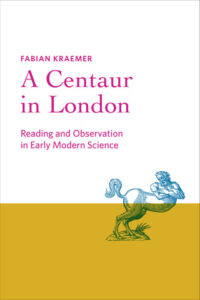 It is not known with any high degree of confidence whether the centaurs of London favoured pineapple and coconut based alcoholic beverages, frequented mock-Polynesian cocktail lounges, or sported immaculately maintained hairstyles, as did the more popularly known lycanthropes of that same city. However any serious discussion of them by natural philosophers in the early modern period – particularly the latter part thereof – throws a rather large spanner into the traditional idea of the Scientific Revolution as having made a clean break with the ancient book-centered method of inquiry into nature in favour of the then newly elevated experimental method. Nullius in verba (“take no one’s word for it” or “nothing in writing”) proclaimed The Royal Society upon their founding in 1660, long since understood as a exhortation only to trust that which has been shown by observation.
It is not known with any high degree of confidence whether the centaurs of London favoured pineapple and coconut based alcoholic beverages, frequented mock-Polynesian cocktail lounges, or sported immaculately maintained hairstyles, as did the more popularly known lycanthropes of that same city. However any serious discussion of them by natural philosophers in the early modern period – particularly the latter part thereof – throws a rather large spanner into the traditional idea of the Scientific Revolution as having made a clean break with the ancient book-centered method of inquiry into nature in favour of the then newly elevated experimental method. Nullius in verba (“take no one’s word for it” or “nothing in writing”) proclaimed The Royal Society upon their founding in 1660, long since understood as a exhortation only to trust that which has been shown by observation.
Yet as Prof. Fabian Kraemer explains in his recently published book A Centaur in London; Reading and Observation in Early Modern Science the break from centuries of book-centered study with its emphasis on the writings and wisdom of ancient authorities and the embracing of an “experimentation or nothing” approach was not nearly so clean as popular understanding would have it. Indeed, Dr. Kraemer “shows instead that the early practices of textual erudition and observational empiricism were by no means so remote from one another as the traditional narrative would suggest,” particularly in taking up such phemonema as monsters.
Just what a monster was understood to be during this period, what evidence Dr. Kraemer brings to the support of his thesis, and perhaps most enticingly what lay behind the title creature of the book will need to await the publication of my complete review of it.
